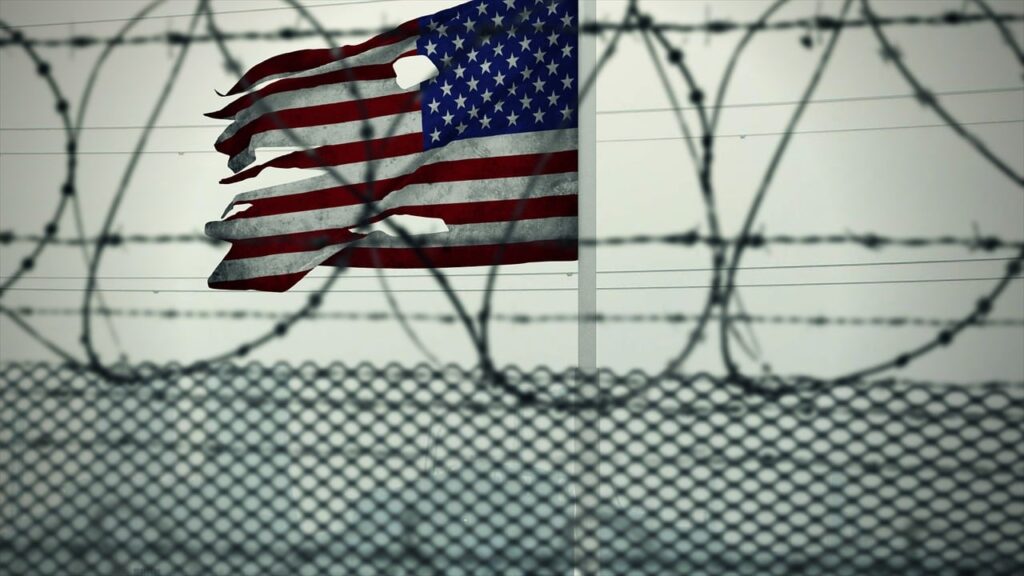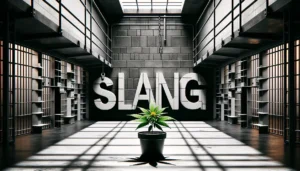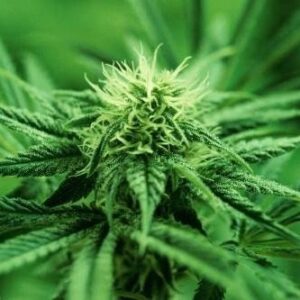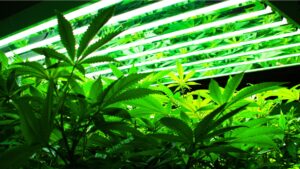The current state of and unacceptable practices within America’s prison system are two of the biggest social justice issues that come up when discussing the War on Drugs. The numbers regarding mass incarceration and the privatization of prisons are some of the most staggering statistics in the world, and the need for prison reform has never more apparent than it is now, with concerns stemming from the Covid-19 global pandemic as well as public outrage over systemic racial injustice that has culminated in protests and civil unrest all over the world.
Stop “Treating” Substance Use Disorders Through Incarceration
Incarceration is a wasteful tool for reducing substance use disorder. The possession or use of drugs should not cause arrests to be dealt with by the nation’s criminal justice system, but rather be treated as a public health issue. 65% of prisoners—1.5 million people—suffer from addiction, but just 11% receive any substance abuse treatment while behind bars. As a result, most resume abusing drugs upon their release. Incarceration costs nearly $32,000 per prisoner per year, which is not a cost-effective way to treat addiction. This is just one point to be made when considering the social injustices in America’s prison system and how it relates to the War on Drugs.
Prison Overcrowding in the U.S.
Many people may be aware that the United States beats out other, much larger countries (including India, China, and even Russia) as having the highest rate of incarceration in the world. A 2018 report from the Bureau of Justice Statistics (BJS) reveals that nearly 2.2 million adults were held in America’s prisons and jails at the end of 2016.
There has been a 500% increase in incarceration over the last 40 years in the U.S., with changes in law and policy -not crime rates- to blame for most of this increase. This has resulted in overcrowding in prisons across the country, as well as fiscal burdens on states.With mounting evidence that large-scale incarceration is not an effective means of achieving public safety, Americans are calling for immediate prison reform.
While their rate of imprisonment has decreased the most in recent years, Black Americans remain far more likely than their Hispanic and white counterparts to be in prison. The Black imprisonment rate at the end of 2018 was nearly twice that of Hispanics (797 per 100,000) and more than five times the imprisonment rate of whites (268 per 100,000). Black men are especially likely to be imprisoned. There were 2,272 inmates per 100,000 Black men in 2018, with the rate even higher among Black men in certain age groups. Among those ages 35 to 39, for example, about 1 in 20 Black men were in state or federal prison in 2018.
Dasheeda Dawson is an industry educator, senior executive leader, and strategy expert for multiple cannabis businesses, municipalities, and other outlets across the country and most recently accepted a position with the City of Portland as the Cannabis Program Supervisor. Dawson explained, “The key thing that has caused a lot of the disproportionate arrests for Black people and other POC is cannabis prohibition. It has absolutely been a tool for maintaining the systemic racism in our country.”
Rani Soto is the Founder of R&S Publishing and is based in New Jersey. He added, “Even with all the opportunity and resources I could possibly provide, my kids could be racially profiled and arrested and have their lives ruined. The prison pipeline is absolutely an issue that affects communities of color.”
What is Mass Incarceration?
Mass incarceration is a term used to describe the fact that the U.S. incarcerates more people than any nation in the world, including China. The U.S. is also the leader in the prison population rate. Mass incarceration refers to the current American experiment in incarceration, which is defined by comparatively and historically extreme rates of imprisonment and by the concentration of imprisonment among young, African American men living in neighborhoods of concentrated disadvantage. It is one of the biggest issues that is correlated with cannabis prohibition and the War on Drugs. With so many states now having legalized cannabis to some degree, there is a huge issue with so many people still being incarcerated for “crimes” related to this particular substance.
“Mass incarceration is not just intertwined with the War on Drugs, it’s a direct root. 4/10 arrests are related to marijuana, so basically we are imprisoning the consumer population which we think we are going to capitalize off of [with the legalized cannabis industry]. The mass incarceration came from the prohibition of an agricultural product or plant. The reason why we can say that is mass is because it does represent the only lump sum chunk of that amount.” -Dasheeda Dawson
Caroline Pineau is the owner of Stem Haverhill, an economic empowerment cannabis retail store in Massachusetts. She explained,
“Ending cannabis prohibition and potentially the overall War on Drugs would be a productive first step for long-term criminal and social justice reform. The most important thing we see reversing is the trend of mass incarceration. A huge portion of the mass incarceration comes from disproportionate drug sentences that largely impact Black, brown, and Latinx populations.”
The Business of American Prison: Private Prisons in the U.S.
The War on Drugs and harsher sentencing policies fueled a rapid expansion in the nation’s prison population beginning in the 1980s. The resulting burden on the public sector led to the modern emergence of for-profit private prisons in many states and at the federal level.
What is a Private Prison?
A private prison, or for-profit prison, is a place where people are imprisoned by a third party that is contracted by a government agency. The main difference between private prisons and public prisons is money, as private prisons receive their funding from government contracts and many of these contracts are based on the total number of inmates and their average length of time served. This means that the more inmates (with longer sentences) that these prisons can hold, the more money they earn. When it comes to overall comparisons, privately run prisons are often less likely to report data on inmate population, staffing, or where the budget was spent.
How do Private Prisons Work?
Governments at the local, state, or federal level seek bids from private firms to operate a prison, jail, or detention center. Private firms then compete to submit a desirable bid but competition is limited, as the industry is dominated by two major firms. The firm with the winning bid then assumes full responsibility for managing the day-to-day operations of a prison facility, such as hiring staff, supplies, disciplining prisoners, and providing programs, etc. In return, the government pays the firm, typically on a per-inmate-day basis. In taking over operational responsibilities, the firm also assumes legal liability in the event of legal or constitutional disputes.
From 2000 to 2016 the number of people housed in private prisons increased five times faster than the total prison population. Over a similar timeframe, the proportion of people detained in private immigration facilities increased by 442 percent. According to The Sentencing Project, the United States has the world’s largest private prison population. Of the 1.5 million people in state and federal prisons in 2016, 8.5 percent, or 128,063, were incarcerated in private prisons. Another 26,249 people (and 73% of all people in immigration detention) were confined in privately-run facilities on a daily basis during the 2017 fiscal year.
A paper published by the University of Baltimore Law Review declared that this for-profit industry violates constitutional prohibitions of cruel and unusual punishment as well as guarantees of due process and equal protection under the law.
“The unique circumstances involved with incarcerating people for profit implicates concerns that make a categorical challenge relying on modern conceptions of human dignity appropriate,” the paper said. The paper’s authors wrote that the constitutional and moral concerns raised by for-profit prisons have grown more serious over the decades, and deserve new consideration by the U.S. Supreme Court. The authors have concluded, “Private prisons are abhorrent on moral grounds, including for the ways that for-profit incarceration wrecks access to justice and diminishes equality in the U.S. criminal justice system.”
The Use of Prison Labor in the U.S.
Prison labor is the forced labor done by the convicts in a prison. Prison labor is economically important due to it being a source of cheap labor, with pay being as low as $0.13 an hour at a prison camp in Nevada.
While the complex issue of prison labor has garnered much attention, the United States’ use of labor in prisons has quite a long history. Prison, or penal, labor is indisputably and deeply rooted in the history of slavery in the U.S., and the aftermath of the Civil War. In 1865, the 13th Amendment was ratified, abolishing slavery and involuntary servitude:
“Neither slavery nor involuntary servitude, except as a punishment for crime whereof the party shall have been duly convicted, shall exist within the United States, or any place subject to their jurisdiction” -13th Amendment of the United States Constitution
There are a number of milestones that show the pushback against former slaves after the Civil War, and the profit-driven incentivization that led to the growth and development of the U.S. prison labor system as it exists today. Incarcerated persons are mostly assigned to in-house assignments, such as cleaning dishes, doing laundry, groundskeeping, or other maintenance and upkeep jobs. About 6% of the prison population are in correctional industries that offer prison programs that produce goods and services for the market.
Dasheeda Dawson discussed this in-depth, noting that we now have an industrial complex in private prisons that is literally fueling our country’s economy. “Our biggest companies and biggest state annual revenue are capitalizing on this modern-day indentured servitude of low wage paid prison labor. We have a prison industrial complex that has been built through mass incarceration that consists of 80% Black and Hispanic people.”
“I think the government’s stance and the propaganda related to both incarceration and cannabis prohibition and their connectivity is a smoke in mirrors situation. Once that gets pulled back as a curtain and science is the foundation, it becomes very clear to see how this is stacking and pointing in the direction of funding something we actually publicly condemn.”
Recidivism Rates in the U.S.
Recidivism is the tendency of a convicted criminal to reoffend. When looking at the American prison system and how it relates to the War on Drugs, this topic is essential to address, as it not only affects the incarcerated individual, but also his/her family and community. Recidivism is an important feature when considering the core criminal justice topics of incapacitation, specific deterrence and rehabilitation.
Among state prisoners released in 30 states in 2005:
- About two-thirds (67.8%) of released prisoners were arrested for a new crime within 3 years, and three-quarters (76.6%) were arrested within 5 years.
- Within 5 years of release, 82.1% of property offenders were arrested for a new crime, compared to 76.9% of drug offenders, 73.6% of public order offenders, and 71.3% of violent offenders.
- More than a third (36.8%) of all prisoners who were arrested within 5 years of release were arrested within the first 6 months after release, with more than half (56.7%) arrested by the end of the first year.
- Two in five (42.3%) released prisoners were either not arrested or arrested once in the 5 years after their release.
- A sixth (16.1%) of released prisoners were responsible for almost half (48.4%) of the nearly 1.2 million arrests that occurred in the 5-year follow-up period.
Re-entry programs are key for reducing recidivism, and must be taken seriously.
In conclusion, we cannot reform and reconstruct our broken society without some massive attention being paid to the prison system and how it operates in the United States. It carries one of the greatest social injustices tied to the War on Drugs.
Dawson expressed, “We’ve had mass incarceration, mass devastation, and now we need mass education.”
I couldn’t agree more.




